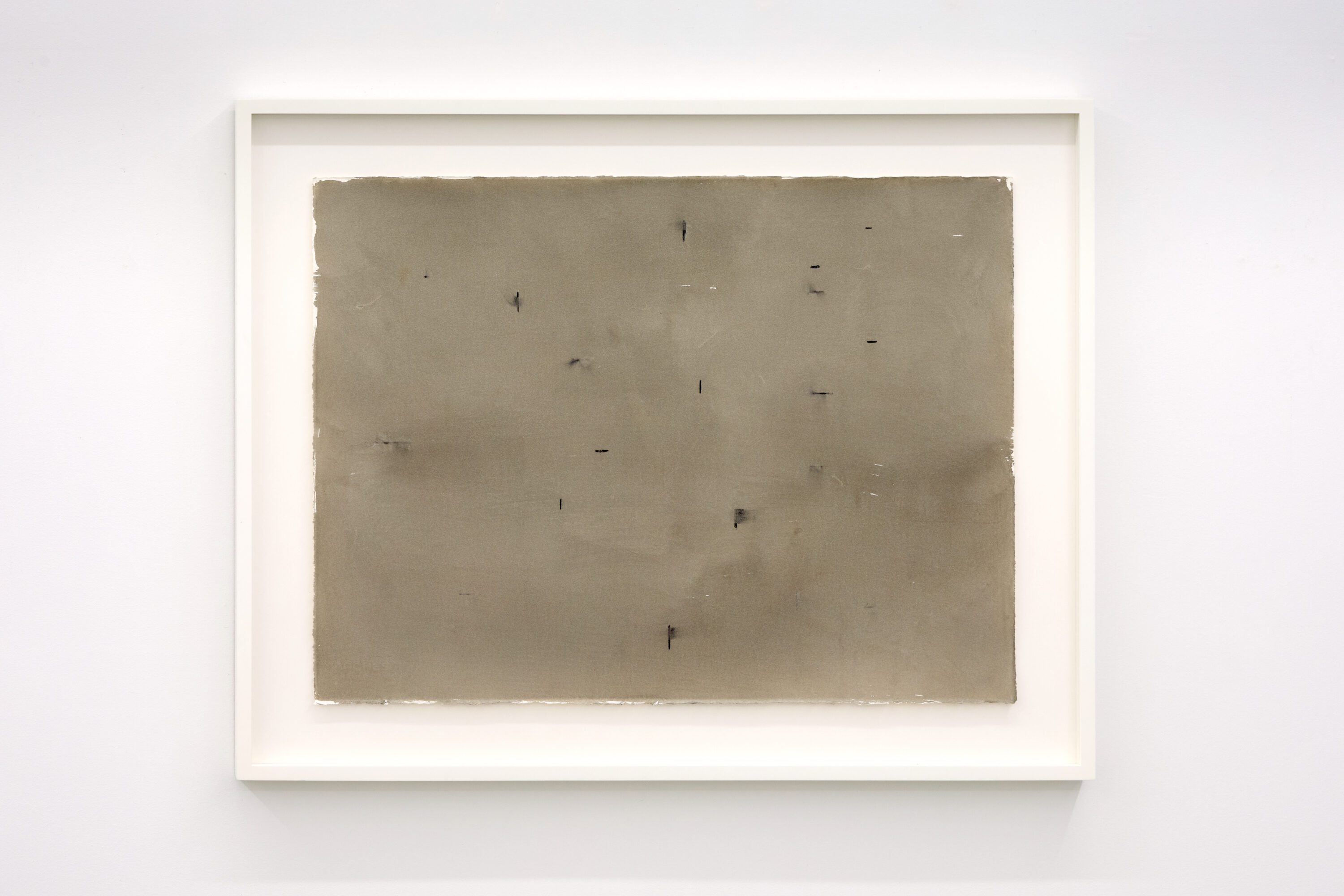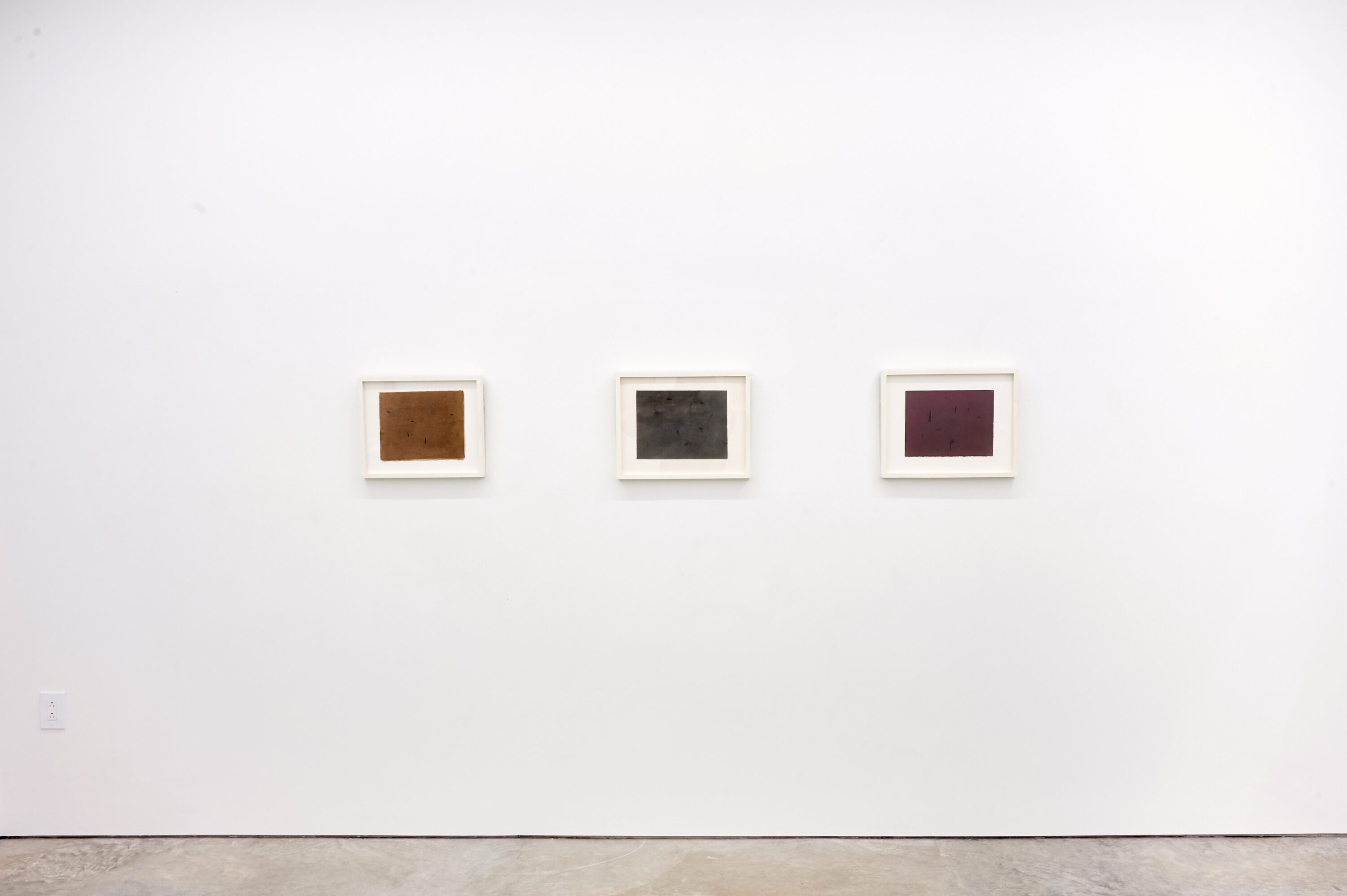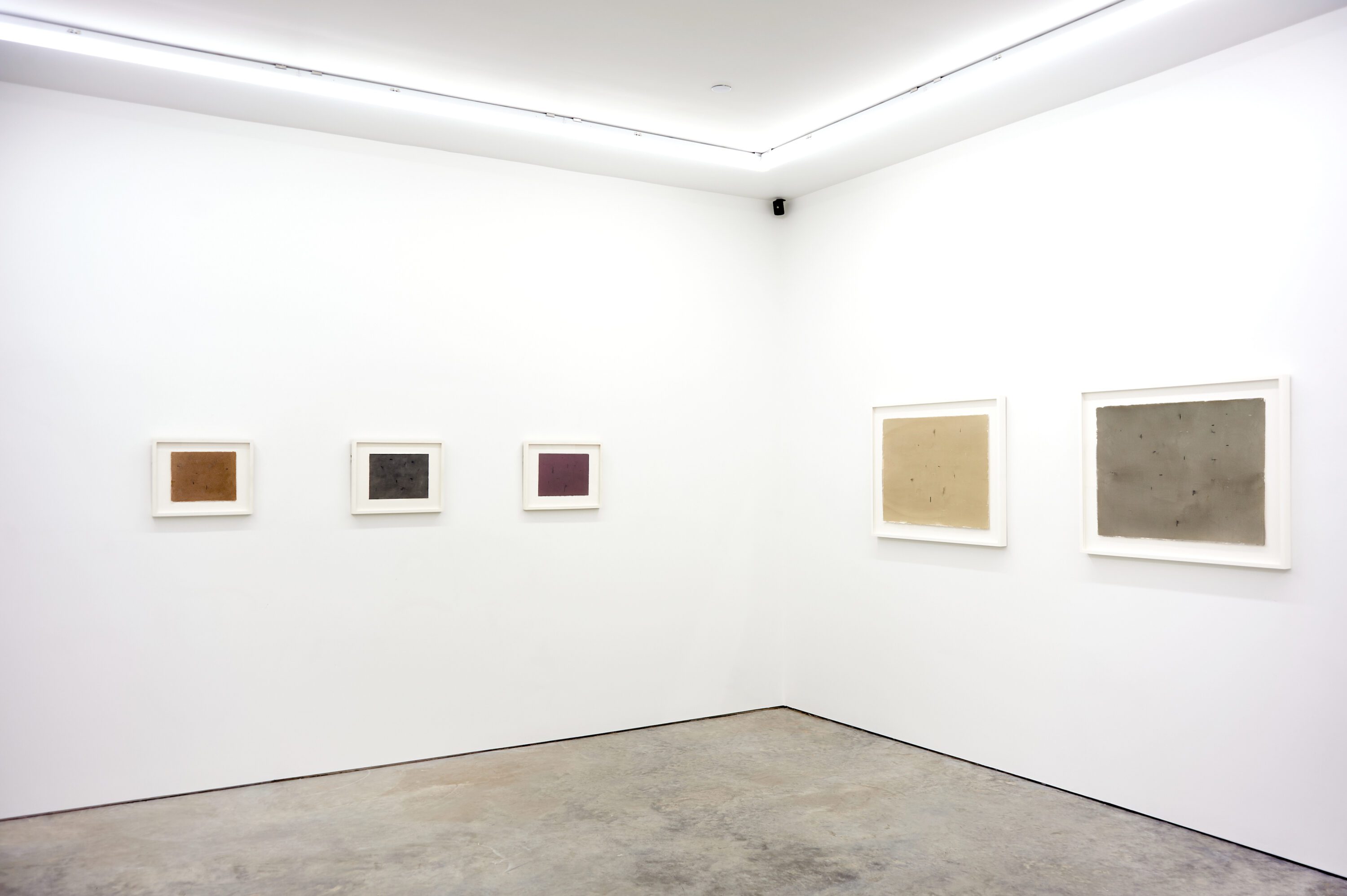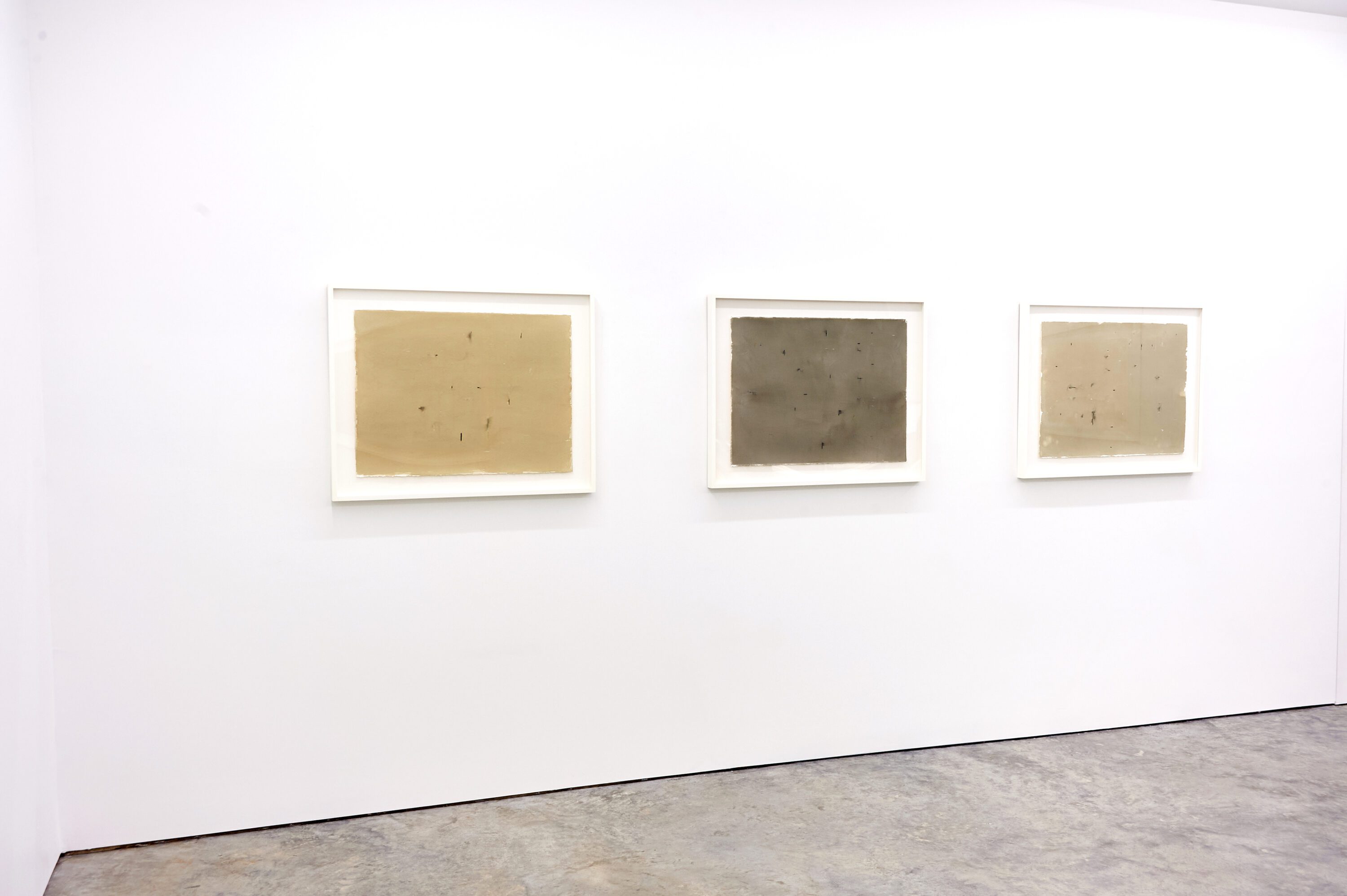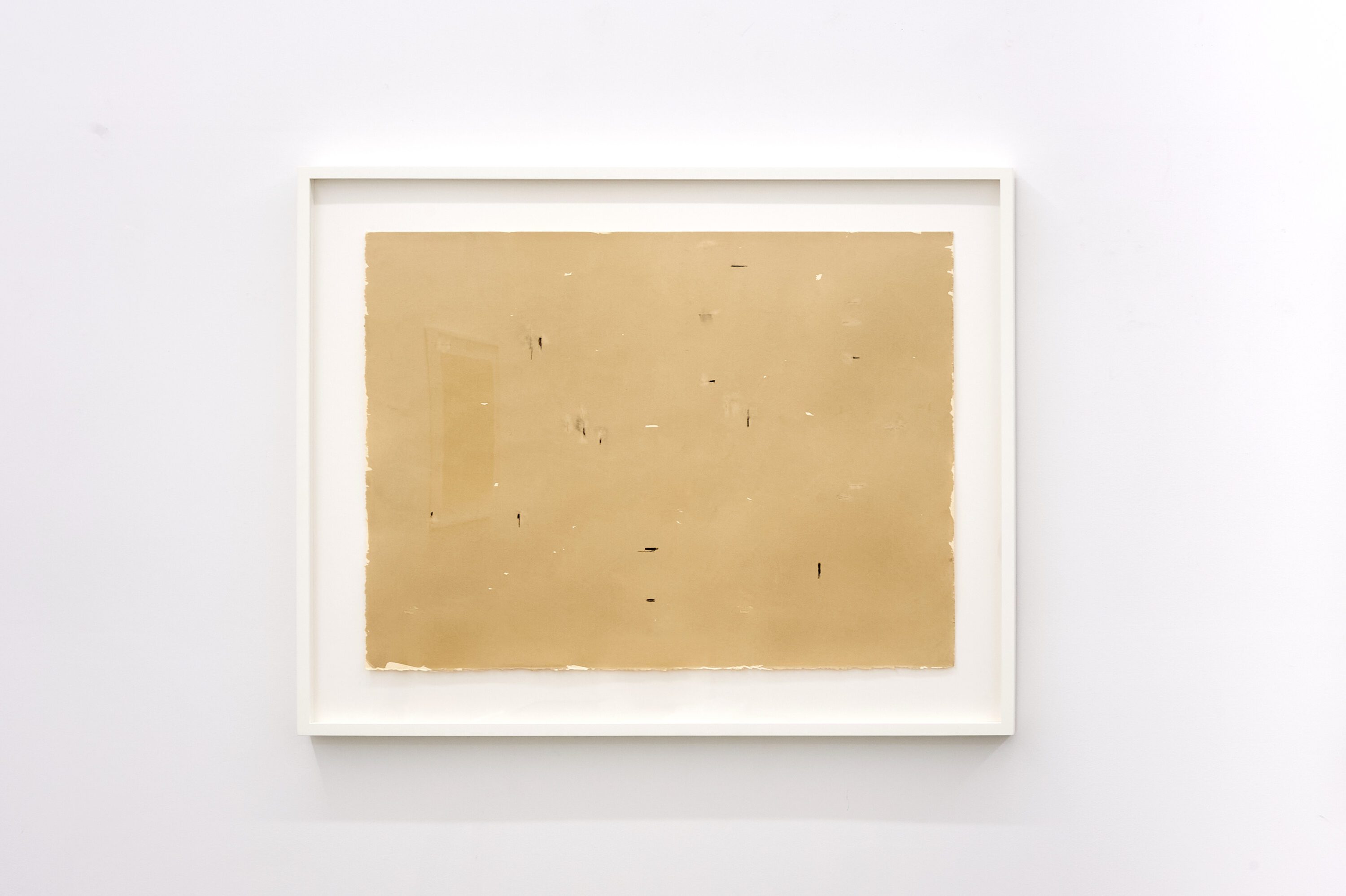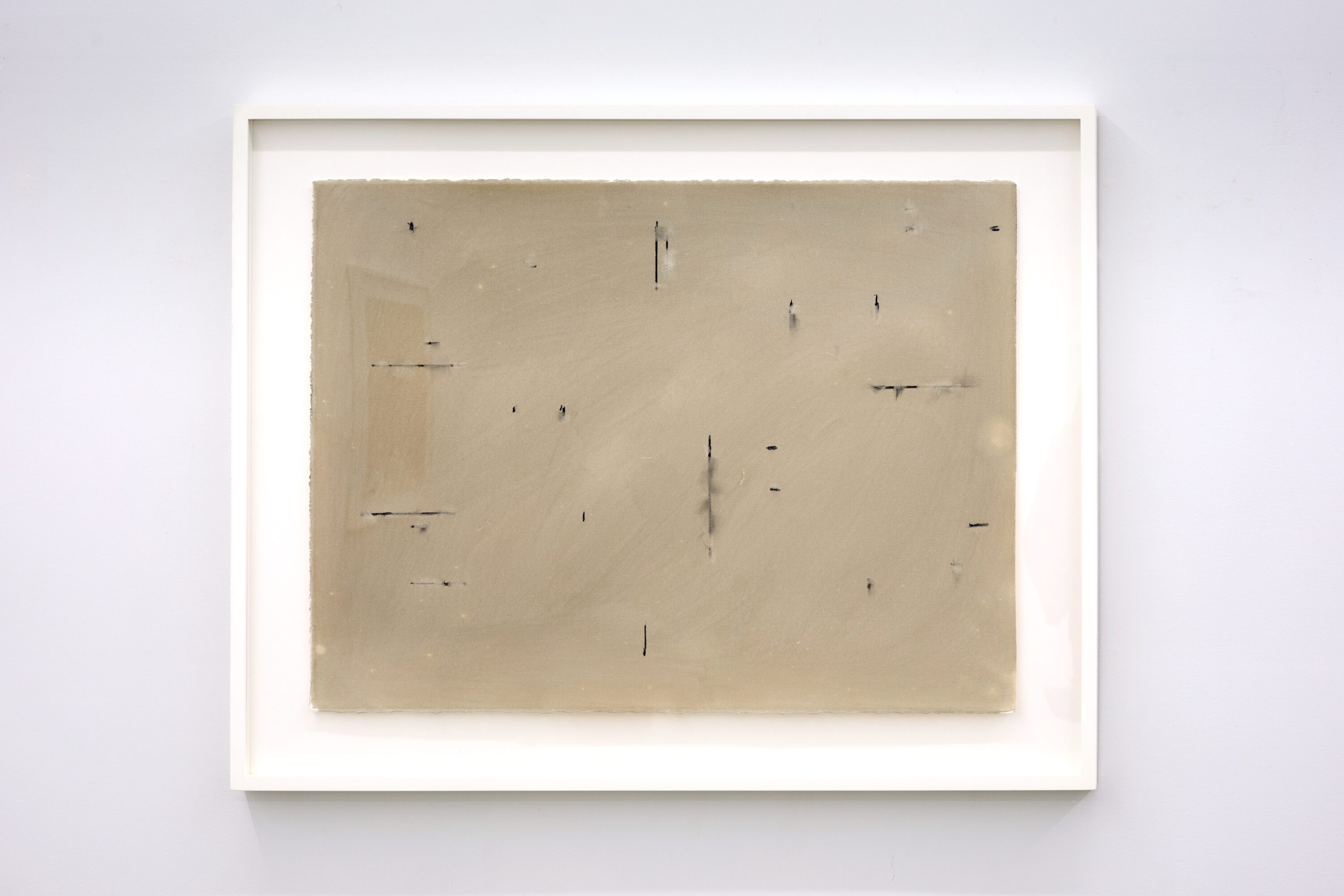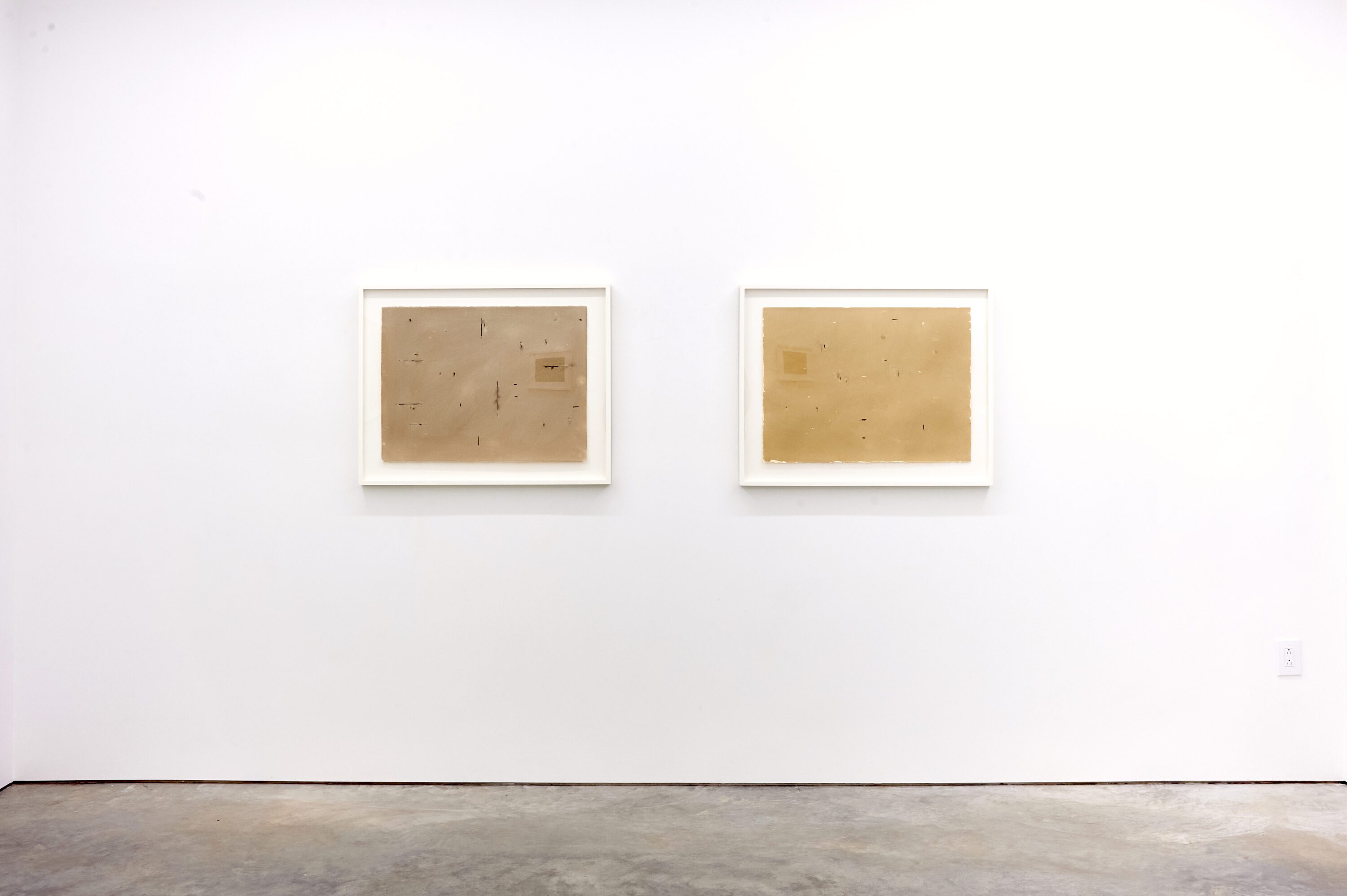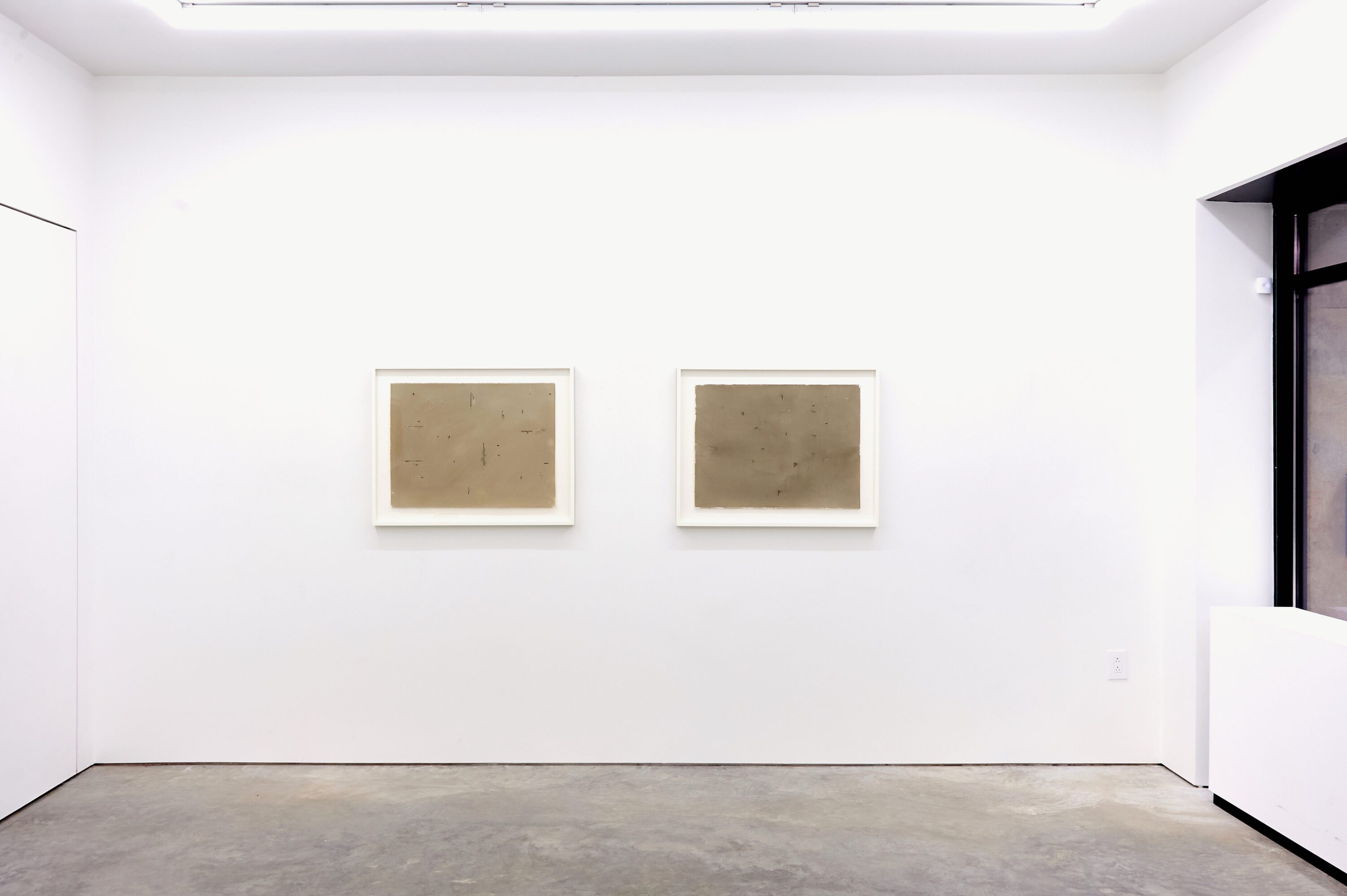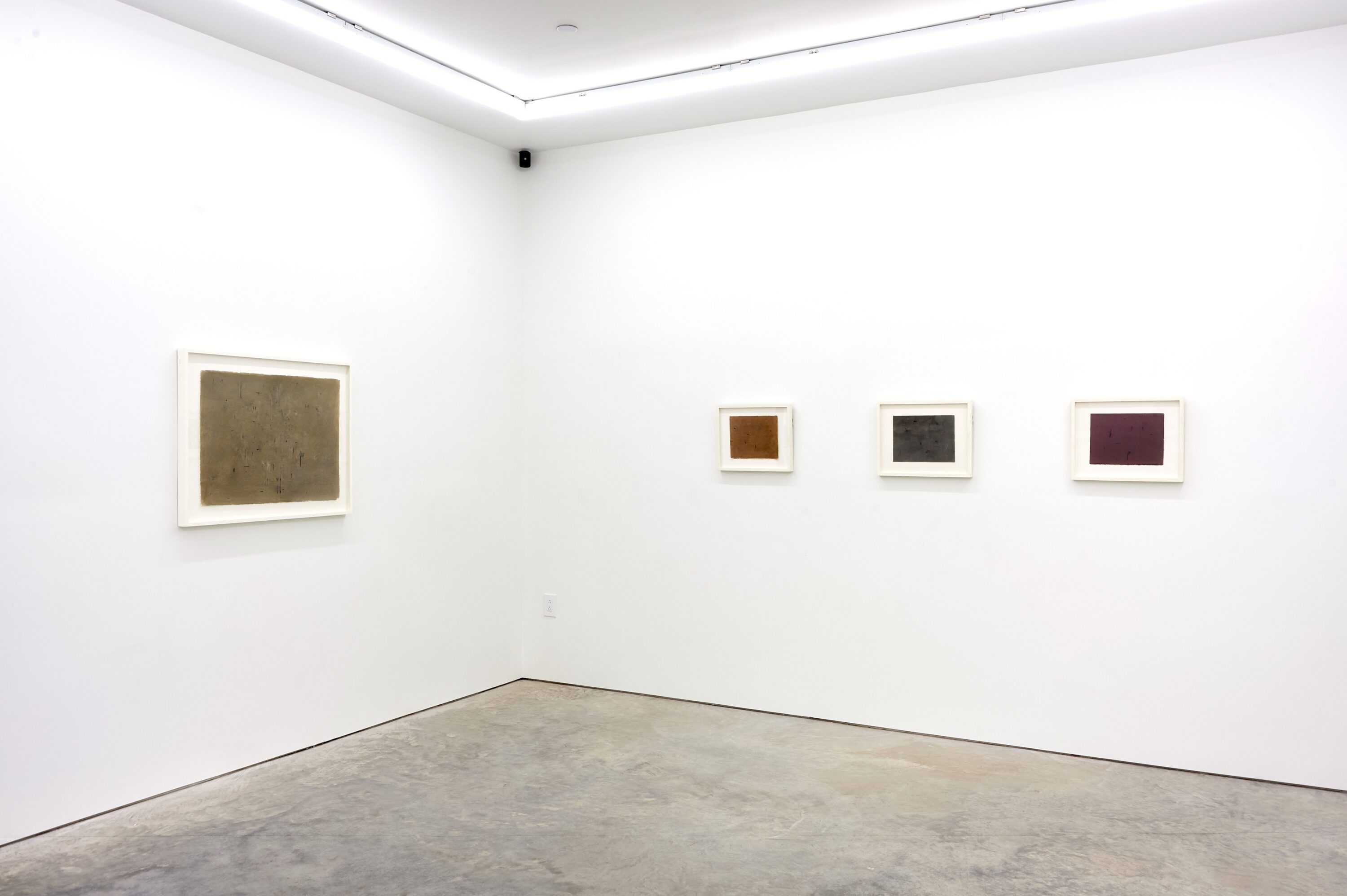In a world filled with alternate realities – think the metaverse, or spatial computing – it can be easy to forget that first truly alternative experience: perspective. And while this may seem an unusual place to begin a discussion of Ty Smith’s works – they’re abstract, right? – what they share with this first true trompe l’oeil is a deep understanding of pictorial depth. This isn’t to say that Smith relies on it, but to explore how truly nuanced his uses of perspective may be.
With I Long for the Words, Smith invites us on a journey beyond the figurative, beyond an allegorical exploration of mark making. Across nine works, our recognitions and connections become challenged, or, in his words, “I wanted to see how much I could let go of the reference.” In fact, he’s done something even more significant. He’s let go of the referent itself, meaning that Smith is pushing through and beyond the constraints of perspective itself. Sure, there’s still a sense of pictorialism, but that’s as much a result of stroke, shade, and spatial composition as it is a reliance on the tropes of narrative.
There’s another significant element to consider. These works are drawings, histories of gestures on the page. They’re the outcome of countless moments of overdrawing, of erasure, of gesture. There’s a beautiful word for the traces these types of actions have. Palimpsest. Often that’s a reference to something that’s been wholly erased so its support can be reused, with traces remaining to push through. Here, Smith uses that technique consciously, choosing what to remove and what might remain. Look, for a moment, at I Long for the Words (Summer Drawing 1), and you’ll see a watercolor wash, strokes, and smears. But you’ll also see moments where the ground shines through: those circles, most visible lower left and center right, for example, but scattered across the surface like stars or points of light. What he does here is take something predominantly monochromatic and imbue it with that sense of pictorial depth, sans narrative.
That same sensibility appears differently in I Long for the Words (Summer Drawing 3), where it’s the variability of the wash itself that compels us to pause and consider the pictorial. Here, Smith’s work shares as much with English painters – think Gainsborough’s clouds or JMW Turner’s seas – as it does with second-generation color field painters like Morris Louis or Jules Olitski, or with polar-opposite artists who redefined drawing like Philip Guston or Cy Twombly. Part of Smith’s subtlety is his ability to combine drawing techniques with painterly sensibilities.
But this sensibility hasn’t emerged because he’s heavily invested in any notion of the representational or the allegorical. As he shares about these works, “the landscape is a given, but I’m not interested in it.” That’s not unexpected, in part because the very name of the orientation of his support is landscape, but these aren’t rote doublings for postmodernism’s sake. In fact, quite the opposite. Orientation is merely part of Smith’s explorations, and the result of a prior series in which both the subject and the support strongly depicted notions of the vertical. “The visual orientation of the horizontal was intentional.”
A personal challenge Smith’s recently set for himself is to create works that might feel or infer opposites: elegant but wild, patient yet fearless. And this becomes more visible, and more persistent, when he compels us to visually detach gestures from grounds. In I Long for the Words (Summer Drawing 8), we’re confronted with a darker, more brooding wash, against which, over, and through push horizontal and vertical strokes and smears. It’s almost impossible to reconcile the two, the softness and pooling of the wash ebbing and flowing between, beyond, and against the more formal geometries of the gestures. It’s the smears that seem to unite them. Smith’s smears are intentional. He takes something often and widely regarded as a mistake and turns it into a virtue. These are compositional elements, not unconscious or irresponsible foibles. And this is one of the great beauties across these nine works. Against psychological tendencies like crisp, clear, and correct, Smith proposes something far more dynamic, far more unpredictable, and far more engaging.
This is rarely more evident than in the moments in which the wash overtakes, but doesn’t overpower, his other gestures. With I Long for the Words (11) and I Long for the Words (Summer Drawing Extended 3), you’ll find works that are predominantly wash while more sparingly gesture. In the first, more than elsewhere perhaps, we’re invited to step into a void. There’s that vast, deep chasm in the center, and what seem like sparing, simple strokes on the surface. With the latter, there’s more information, more strokes, and that deep red-purple color – merlot, perhaps – that’s moodier, more intense, and the heir to works like Three Virtues (Temperpance, Hope, and and Fortitude), attributed to the circle of Lorenzo Monaco. In these moments you might pause to ask if Smith does color-field drawing, if there is such a thing. You may even read these works as metaphors. Where I Long for the Words (8) is dense and filled, these move from empty and open through denser and deeper, as if our understandings move from cluttered and confused toward understanding and clarity.
And what of these words? What’s Smith longing for? Most importantly, “the infinite possibilities and sensibilities of drawing.” And time. For an artist so motivated, and so persistent, it can be difficult to pause and reflect. Smith is an artist with an artisan’s work ethic, often finding that he is so excited to move on that he hasn’t stopped to find titles. It’s these moments he longs for – not so much that he doesn’t have the words, he just has a sense of creative urgency that makes stopping to speak seem like a distraction. But maybe it isn’t even about the words themselves. It isn’t so much that they’re needed. It’s more that they still want to be shared. And let’s not forget – being inspired to work, to create, to share isn’t something to deny. Rather, it’s something to long for. For Ty Smith, and for each of us.
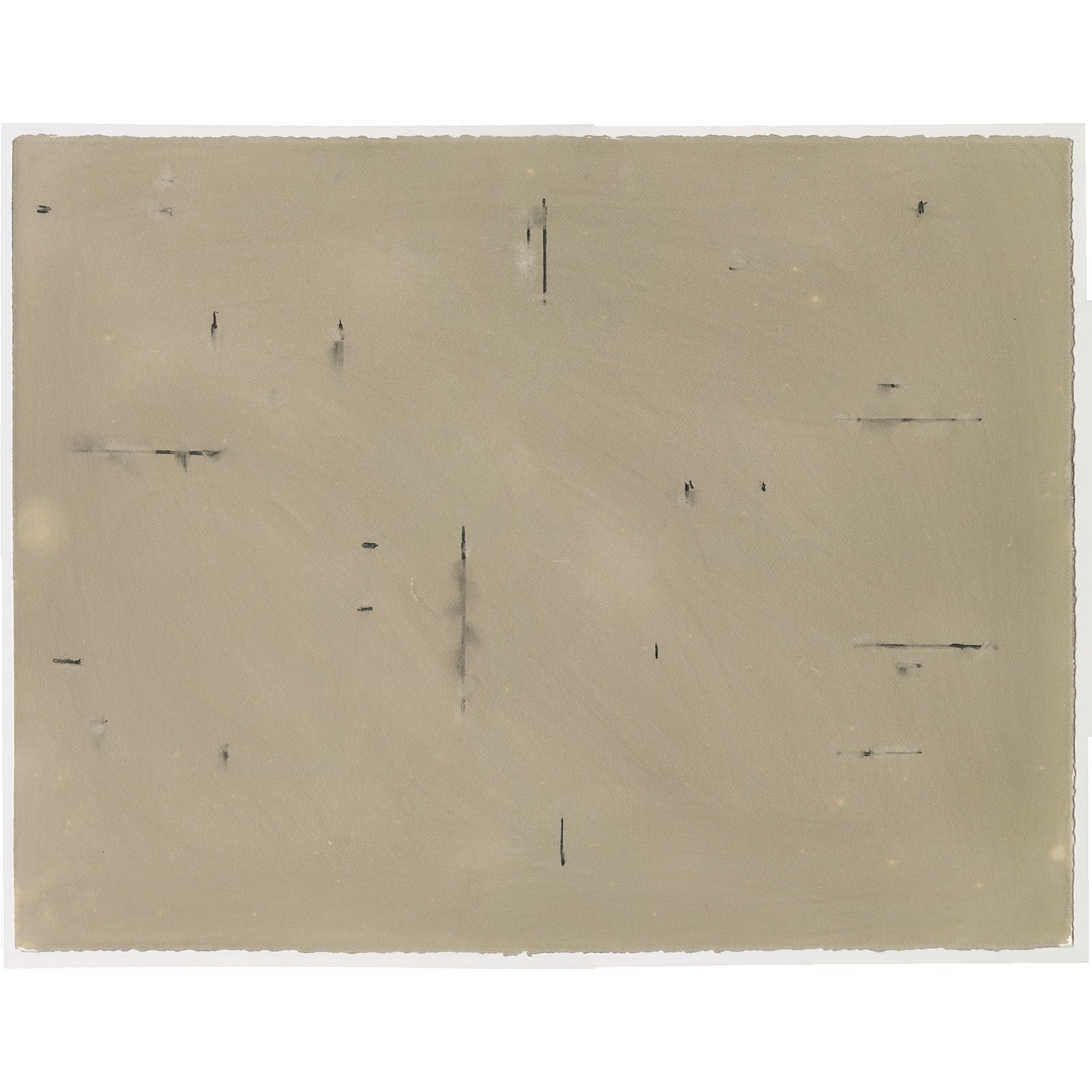
Ty Smith
I Long for the Words (Summer Drawing 1)
22.5 x 30 inches
charcoal and ink on paper
2023

Ty Smith
I Long for the Words (Summer Drawing 3)
22.5 x 30 inches
charcoal and ink on paper
2023

Ty Smith
I Long for the Words (Summer Drawing 6)
22.5 x 30 inches
charcoal and ink on paper
2023

Ty Smith
I Long for the Words (Summer Drawing 7)
22.5 x 30 inches
charcoal and ink on paper
2023

Ty Smith
I Long for the Words (Summer Drawing 8)
22.5 x 30 inches
charcoal and ink on paper
2023

Ty Smith
I Long for the Words (Summer Drawing 10)
22.5 x 30 inches
charcoal and ink on paper
2023

Ty Smith
I Long for the Words (Summer Drawing Extended 1)
9 x 12 inches
charcoal, watercolor and ink on paper
2024

Ty Smith
I Long for the Words (Summer Drawing Extended 3)
9 x 12 inches
charcoal, watercolor and ink on paper
2024
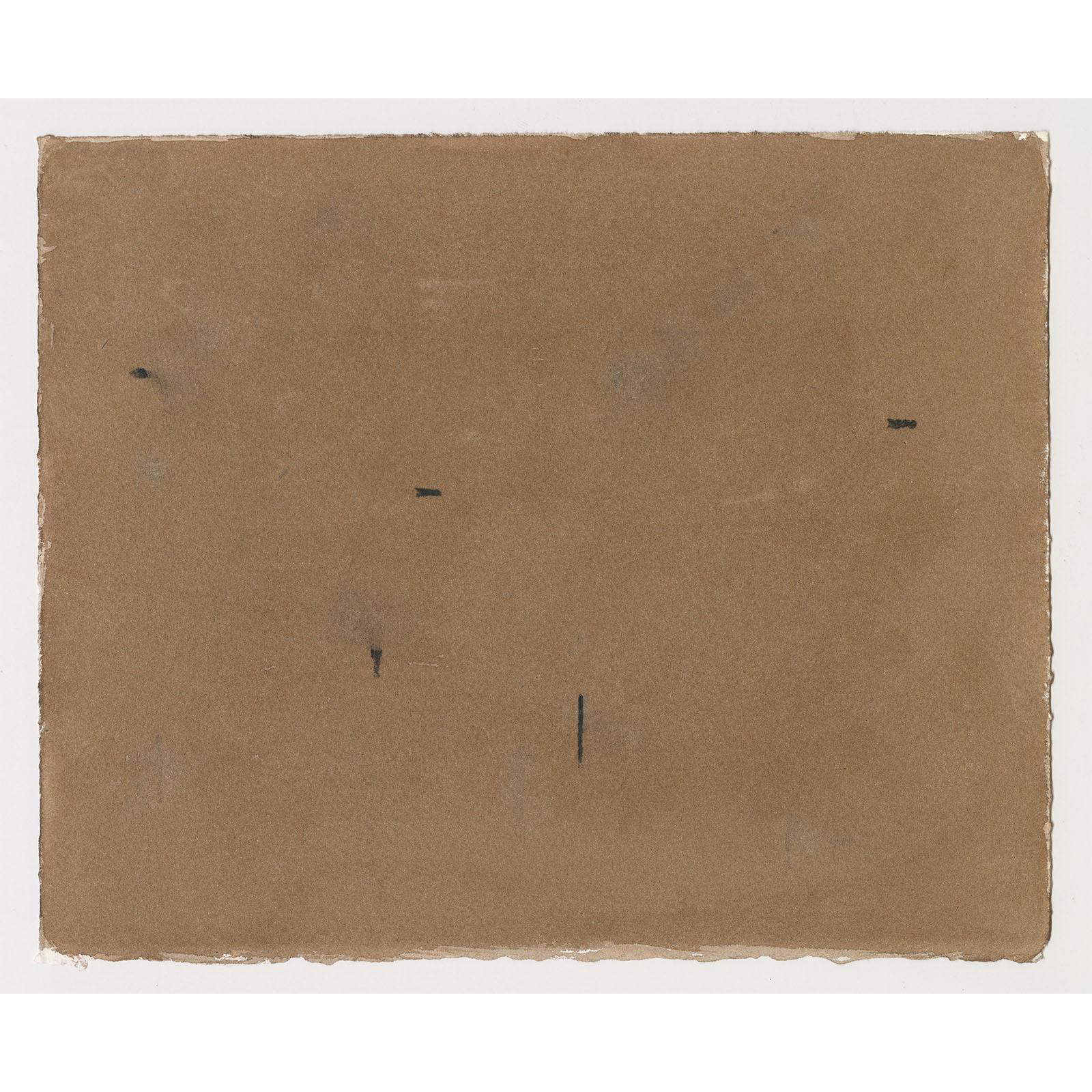
Ty Smith
I Long for the Words (11)
9 x 11 inches
charcoal, watercolor and ink on paper
2024

